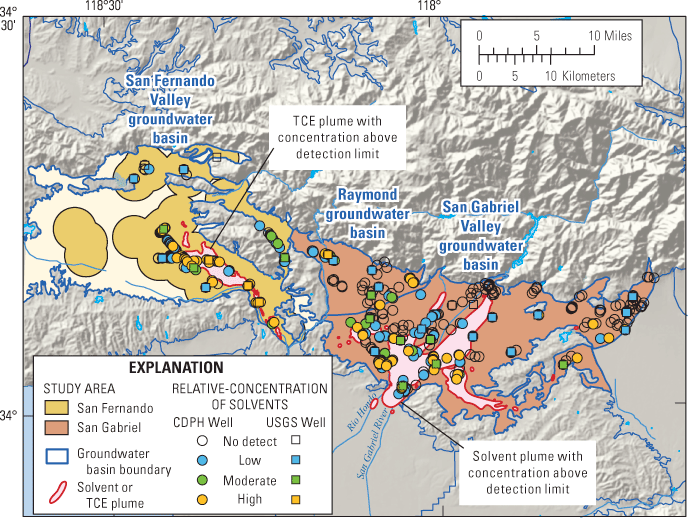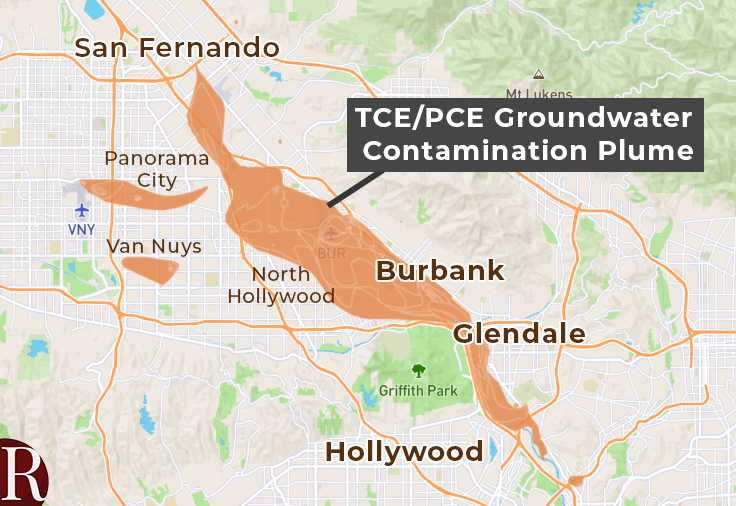Introduction
Since about 70% of the Earth’s surface is water, it is undoubtedly one of humankind’s most significant resources. Water is used in almost all areas and processes of human activity and is an essential element in domestic and industrial applications—nevertheless, a closer inspection of the planet’s water resources points to their poor, threatening condition. The scarcity of clean sources is a danger of water pollution.
In the first place, the organisms and vegetation for which water is a habitat are directly affected. Secondly, people in direct or indirect contact with contaminated water sources are in great danger.
Groundwater contamination occurs when manufactured items such as gasoline, oil, road salt, and chemicals pollute it, making it unsafe for human consumption.
Moreover, local sewer systems, landfill leachate, leaking sewers, gasoline filling stations, fracking, and overuse of fertilizers in agriculture can contaminate groundwater. The situation in the San Fernando Valley is particularly noteworthy; despite numerous water sources, most are so polluted that they can no longer be used. Water wars, agricultural activities, and industrial waste are the foremost factors that have caused contamination of the groundwater of the San Fernando Valley.
Water Wars
To comprehend why the groundwater is highly contaminated, one needs to start with the origin of the environmental disruption, which, surprisingly, was the aqueduct project. One additional payback opportunity the investors saw for the project was to irrigate the resulting water to the San Fernando Valley, which was quite fertile (Bloch, 2020). It offered enormous benefits to the syndicate members, who invested in the purchase of the land and hoped to be able to develop it with the resulting water. To this end, a decision was lobbied to annex the San Fernando lands into the city, simultaneously allowing Los Angeles to mortgage the lands to issue debt for the aqueduct project and increase the value of the lands (Harkness et al., 2022). The lobbyists for the project were extremely determined, ignoring local opposition and not even attempting to find adequate solutions to support the valley’s economy.
It was a rather backward-looking position with only one goal: to get water for Los Angeles at any cost. While the intrigue continued in this arena, the water pumping that began led to Lake Owens becoming intensely dry and saline (Bloch, 2020). As a result, water became scarce for both sides of the conflict, and litigation started with the lake’s water users and the City of Los Angeles.
The boiling point for the farmers of the valley was the withdrawal of much of the runoff, making irrigation impossible (Randle, 2022). Nevertheless, in the mid-twentieth century, a second phase of the aqueduct was initiated, which involved groundwater pumping primarily. Their extraction with an intensity higher than the rate of natural saturation of aquifers led to the intensification of desertification and degradation of vegetation.
A complete assessment of the environmental impact of these projects has never been conducted. It was not until 1978 that some environmental influence investigations were published, which became the scientific basis for a new wave of litigation (Randle, 2022). As a result of years of construction with good intentions, the area of irrigated land in the San Fernando Valley has increased. Indeed, the project transformed Los Angeles County into the country’s richest agricultural area, which remains today a huge metropolis (Randle, 2022). However, the dam’s construction effectively killed the environment, and even then, the issue of groundwater began to gain critical momentum.
Agricultural Activities as a Cause of Pollution
One of the main causes of pollution in water bodies is agricultural activities. Nitrates and other chemicals, which are part of fertilizers, get into the soil and then into the groundwater. Throughout history, the San Fernando Valley has been used as a source for planting various crops and plants.
However, in addition to crop yields, farming has environmental consequences. Agricultural runoff is a major cause of water pollution in the United States today, particularly in the San Fernando Valley. Beyond that, the situation is widespread, and even the EPI report shows the agriculture industry as polluting the water and evading responsibility for the better part of half a century (Randle, 2022). Sources of pollution include fertilizer runoff from arable land and manure runoff from industrial farms, as well as pesticide, phosphorus, nitrogen, and fecal bacteria contamination of water bodies.
Furthermore, the spread of harmful bacteria that densely inhabit groundwater now should be mentioned. In the San Fernando Valley, E. coli bacteria were found in 73% of the streams studied, and the number of harmful algae is increasing (Bloch, 2020). The problem is that agriculture is largely exempt from responsibility for polluting water bodies, and this loophole needs to be closed.
The law, passed in 1972 after the Cuyahoga River fire and other industrial disasters, seeks to combat pollution from factories and sewage treatment plants (Randle, 2022). It includes binding rules for specific identifiable sources of pollution, such as sewage pipes that discharge wastewater into water bodies. However, agricultural wastewater often cannot be attributed to a single pipe or source, and these nonspecific sources of pollution are very poorly regulated under the Clean Water Act.
That said, industrial agriculture has become more prevalent in the decades since the law was passed. EPI has sent several letters to the U.S. Environmental Protection Agency calling for universal changes, including updating industry standards for water pollution (Randle, 2022). It is important to emphasize that the groundwater in the San Fernando Valley is significantly contaminated because the same agricultural fertilizers are putting significant amounts of nitrates into the groundwater. Moreover, there is an increasing concentration of mercury and other hazardous substances (Picture 1). Agriculture is not the leading cause of pollution, giving way to industrialization, but its role in ecological disruption certainly exists.

Industrial Issues as a Foremost Contamination Reason
Without a doubt, the twenty-first century is characterized by the rapid development of technology, which, despite its benefits, is mercilessly destroying nature. It is a well-known fact that the San Fernando Valley has numerous underground water resources. The resources are abundant, and approximately 800,000 residents of Los Angeles can be supplied entirely with water (Harkness, 2022).
However, this situation has a basic condition: the water must be clean. At the same time, 80 percent of the wells are now so polluted that they cannot be used (Picture 2). Oddly enough, the entertainment that brings much joy to children and adults in the region is the first reason for this. Hundreds of the most popular corporations in the San Fernando Valley, including Warner Bros. and Walt Disney, produce waste daily (Bloch, 2020).
The content they create is unique and public; everyone can comprehend it. However, not everyone has access to the information that even these companies, despite the innocuousness of their products, destroy a lot of resources and produce trash that often ends up in the groundwater.

However, the emissions of entertainment corporations are not as significant as those of those whose existence has long been kept secret. First, Lockheed is worth mentioning, a giant firm whose products are no less impressive in scale. This huge company, the size of an airport, produced P-38 fighters and other aircraft that became a powerful weapon in World War II (Harkness, 2022). This plant was particularly hidden during the war, but even afterward, information about its existence was not excessively publicized.
The war effort and the continued presence of defense companies and other industrial activity in the valley in the following decades left their mark. To avoid having to think about disposal problems, companies often dump the substances into bodies of water. It is how trichloroethylene and perchloroethylene have found their way into the groundwater in concentrations exceeding California safety standards (Harkness, 2022). These substances themselves cause serious illnesses, often incompatible with life. Their presence in the groundwater makes their use illegal and dangerous.
In the path of this underground Los Angeles River are drains of toxic contaminants left behind by the careless dumping of industrial chemicals on the porous Earth. It will take years of cleanup before the water is suitable for drinking (Harkness, 2022). Accidents in factories and laboratories and numerous spills lead to pathogenic bacteria and highly toxic compounds entering the groundwater. Nowadays, factories and plants operate in the valley, which has become the leading cause of water disasters (Harkness, 2022).
Thus, while groundwater used to be considered the cleanest, in recent times, it has been polluted by human waste, and various impurities and chemical compounds far exceed the allowable standards. Storage tanks in the valley also cause many groundwater problems if they leak. These tanks typically contain oil, gasoline, chemicals, and other hazardous liquids that can immediately contaminate groundwater if they come into contact with them. Although these tanks are usually located above ground, they are also placed underground, which increases the likelihood of contamination of the surrounding groundwater.
It does not matter how well a storage tank is built; it is bound to crack and corrode over time, and leaks will occur. When these contaminants reach groundwater, the contamination can be severe. Contaminant leaks into the groundwater cause general health problems caused by oil and gasoline contaminants, including headaches, dizziness, nausea, and confusion (Harkness, 2022). Due to this, water treatment is necessary for both industrial and domestic use to improve water quality. Mechanical, physical, and chemical purification are currently the most promising methods that can affect solutions to the problem.
Conclusion
Therefore, Los Angeles is now being forced to rehabilitate and implement measures to mitigate the negative environmental impacts caused by pumping water for its water supply. Against prolonged drought and pollution, Los Angeles is experiencing water shortages and is forced to incur the ongoing costs of implementing court decisions to maintain disturbed ecosystems. California’s water wars continue, but it is a battle of consequences and growing needs. The consequences of the original project are forcing even the original water use to be reduced and the accumulated environmental impacts to be dealt with.
Moreover, agriculture and active business activities have made the groundwater of San Fernando unusable despite its magnitude. Indeed, the city benefited from the construction of the water supply system and aqueducts, and the water supply system created is still in operation today. However, comparing the damage done and the benefits obtained is difficult. There are probably benefits, but they could have been obtained with much less damage to society and nature.
References
Bloch, Stefano. 2020. “An Autoethnographic Account of Urban Restructuring and Neighborhood Change in Los Angeles’ San Fernando Valley.” Cultural Geographies 27 (3): 379-394. Web.
Harkness, Jennifer S., and Bryant C. Jurgens. 2022. “Effects of Imported Recharge on Fluoride Trends in Groundwater Used for Public Supply in California.” Science of the Total Environment 830 (20): 15-47. Web.
Jade, Kulongoski. 2016. “USGS”. Web.
Randle, Sayd. 2022. “Holding Water for the City: Emergent Geographies of Storage and the Urbanization of Nature.” Environment and Planning E: Nature and Space 5 (4): 2283-2306. Web.
Tara, Lohan. 2022. “The Relevator”. Web.